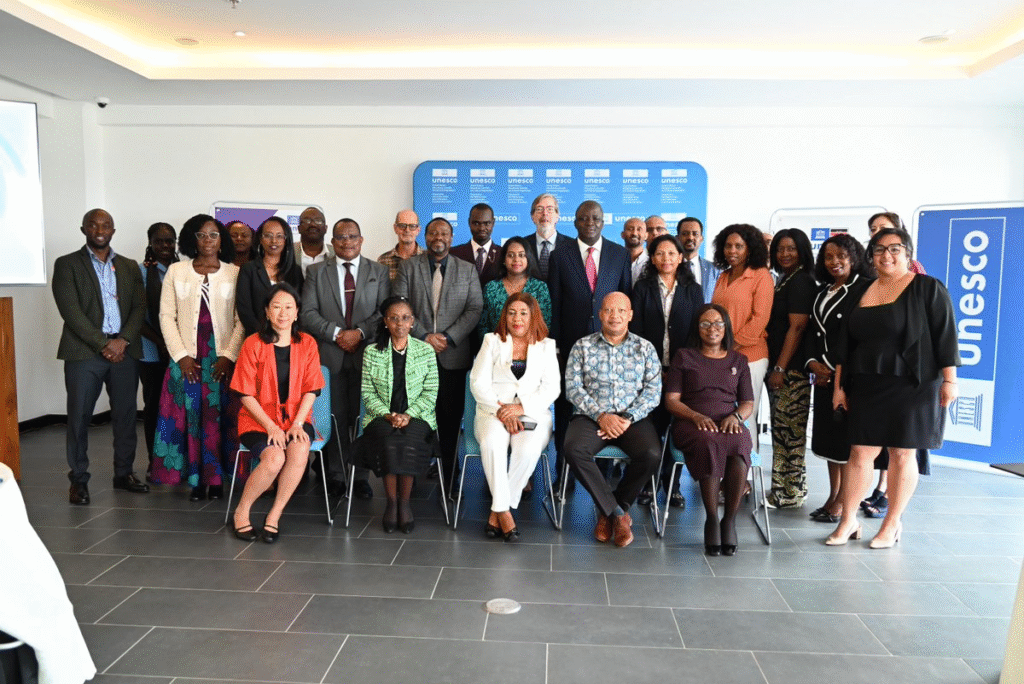Uganda to Launch Second Satellite for Enhanced Communication and Innovation

Uganda is making significant strides in its space program, with plans to launch a second satellite aimed at improving communication capabilities, including telephones and television. Last year, the country launched its first satellite, PearlAfricaSat-1, as part of a joint project with Japan.

Uganda’s space program is advancing significantly, and there are plans to launch a second satellite with the goal of enhancing communication capabilities, including telephone and television. As part of a cooperative venture with Japan, the nation launched PearlAfricaSat-1 last year, its first satellite.
Uganda is working on launching another satellite into the space, Dr. Monica Musenero, the Minister of Science, Technology, and Innovation has said.
“This one will give us more capacity for communication and things like telephones and television. We are moving steadily and building the capacity needed, “Dr. Musenero said on Wednesday during the launch of this year’s National Science Week in Kampala.
Last year, Uganda launched the country’s first-ever satellite, PearlAfricaSat-1.
The satellite developed by Ugandan engineers Edgar Mujuni, Bonny Omara, and Derrick Tebusweke is part of the BIRDS program, a cross-border interdisciplinary satellite project for non-space faring countries supported by Japan.
The development followed Uganda’s agreement with Kyushu Institute of Technology (Kyutech) in Japan which involved upskilling the three graduate engineers to design, build, test, and launch Uganda’s first satellite.
The satellite was loaded with more than 8,200 pounds of research, crew supplies, and hardware and was meant to provide research and observation data in six primary areas including weather forecast; land, water, and mineral mapping; agriculture monitoring; infrastructure planning; border security, and disaster prevention.
Speaking on Wednesday, Cosmas Mwikirize, the superintendent at the industrial value chains development at the Science, Technology and Innovation said since the PearlAfricaSat-1 was just the beginning for the country, not so much is expected out of the country’s first satellite.
“The first satellite we launched had limited capacity because it our first shot into space, but we have now started the work towards developing our second satellite built by our own people,” Mwikiriza said.
“The first satellite is in the space but has limited capability and had a limited lifespan. It was never expected to lead us to a lot of capacity as a nation. It was a student developed satellite with limited capacity but will help us showcase that we can do it.”
He was however quick to note that the country is currently on the right track to development the necessary expertise for bigger and improved satellites.
“The space program is far much bigger than assets(satellites) but we have taken quite big strides as a country. When we started out in 2020, we absolutely had no capacity on any front, and we sent out three engineers to Japan to develop our first satellite.”
He said as part of the program to develop the space program, Uganda has development Mpoma satellite into an ultra-modern earth station that can help the country control not only its satellites but also get data from other countries with which the country has collaboration.
Mwikirize said as part of the program, Uganda has trained several engineers abroad in Japan, Egypt, and China among others.
“Gradually we are growing the requisite human capital that is going to help us develop the assets but also products. The second satellite is being developed in Uganda in collaboration with our partners.”
The Minister of Science, Technology and Innovation said the National Science Week set for November 6 to 11, 2023 will see Uganda showcase her science and innovation journey.
“As of July 2023, Uganda was characterized by average age of 16.3 years, indicative of a generation raised in an era of technological diversity and drastic progress. As a Secretariat under the Office of the President, we are strategically aligning our efforts to meet the unique needs of this expanding demographic by championing innovations tailored to their requirements. Our core thematic areas include the utilization of Artificial Intelligence to bolster industry and production, pioneering advancements in vaccine and drug development through pathogen research, venturing into space and aeronautics exploration, and propelling technological innovations aimed at optimizing transport and mobility,” Dr. Musenero said.
A survey conducted by the United Nations Development Programmed (UNDP) indicated that Uganda advanced to the 119th rank out of 132 countries in the Global Innovation Index for the year 2022.
The minister said this upward trend underscores Uganda’s unwavering dedication to advancing science and technology, signifying substantial advancements in this field.
She noted the National Science Week will therefore serve as a pivotal platform, strategically designed to showcase the milestones Uganda has achieved in the domains of science, technology, and innovation, not only on a national scale but also on the global stage.
“Science, technology, and innovation as the driving force to economic transformation. We are confident that government strategic focus in this area is already beginning to yield results, paving the way for Uganda to compete on the global scale. Our primary objective is to export technology and break free from the dependency on imported Science, technology and innovation products that have dominated our previous decades.”
This year’s National Science Week will run under the theme; “Uganda Tusimbudde: Our science-led journey towards socio-economic transformation,” and will be opened by President Museveni.







